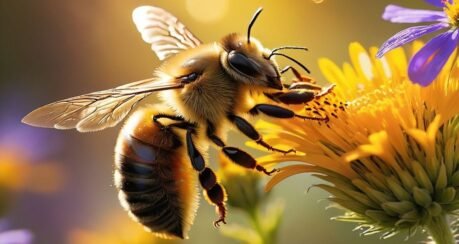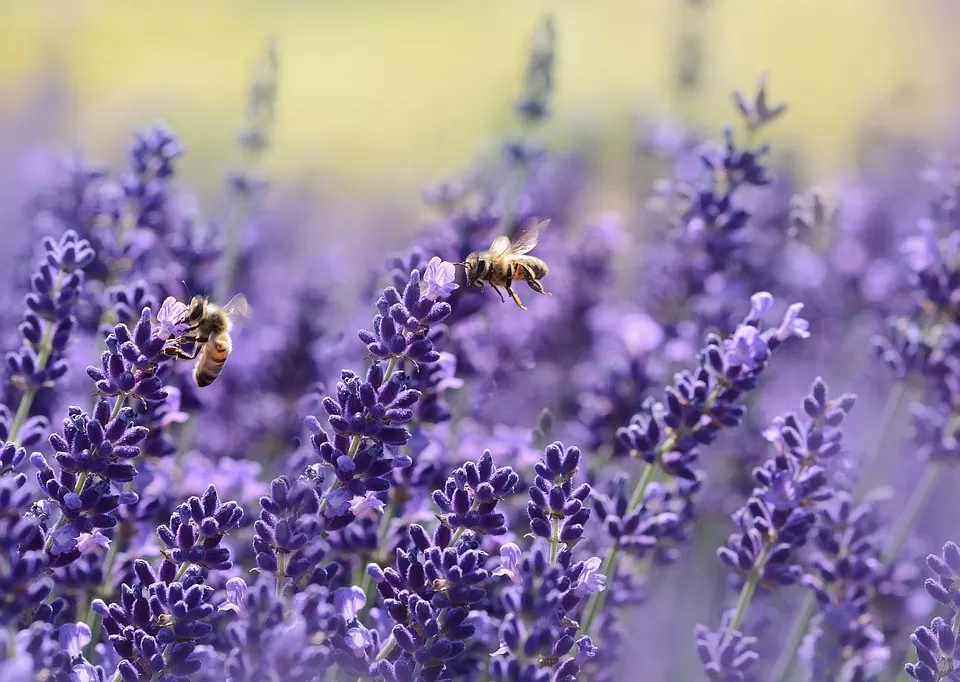Have you ever wondered how honeybees are able to keep their hives perfectly cozy, regardless of external weather conditions? It’s truly a marvel of nature, a dance orchestrated by one of the world’s most fascinating creatures. Honeybees are not just masters at producing honey; they are artists when it comes to constructing and maintaining the optimal environment for their colony. This orchestration of temperature regulation within the hive ensures that their young are nurtured in an environment conducive to growth and survival.
Understanding the Role of Temperature Regulation in a Bee Hive
Temperature plays a pivotal role in the life of honeybees, dictating not only their workload but also their survival. A stable internal hive temperature of about 35°C (95°F) is essential for brood development. This consistency allows the brood, or young bees, to develop properly. If the temperature deviates too much, it can affect their growth, leading to problems within the colony.
The Ideal Hive Temperature
Maintaining the ideal temperature range is crucial for the hive’s health. When it’s too cold, the development of larvae is stunted, and the colony may struggle with increased mortality rates. On the contrary, excessively high temperatures can lead to the melting of beeswax and increased susceptibility to disease. Hence, bees aim to ensure the temperature always stays just right.
The Thermoregulation Experts
Honeybees employ several sophisticated behaviors to manage the internal temperature of their hive. It’s a combination of teamwork, biology, and physics that keeps everything in balance. When you consider that the average hive might contain tens of thousands of bees, you’ll realize it’s quite a feat to manage such synchrony.
The Hive Construction: Engineering Marvels of Beeswax
Before delving deeper into their temperature management skills, it’s fascinating to consider the basic construction of their living quarters. Beeswax serves as the primary material, a marvel of lightweight durability and thermal insulation properties.
Hexagonal Efficiency
Bees construct their hives using hexagonal cells, a design that optimizes space and resources. This structure is not only efficient but also plays a role in temperature regulation by creating minimal gaps through which warm air can escape.
Wax Secretion and Formation
Bees secrete beeswax from glands and strategically form it into cells. This whole process is temperature-dependent, proving once more how critical temperature regulation is to their existence.
How Bees Regulate Hive Temperature
The mechanisms honeybees use to control hive temperature are nothing short of extraordinary. Here’s a closer look at how these tiny creatures manage to turn their hives into a perfectly climate-controlled oasis.
Wing Fanning: The Air Conditioners of the Hive
In hot conditions, worker bees fan their wings to create airflow, effectively reducing the temperature by causing evaporation. This behavior is akin to having an air conditioning system inside the hive, with individual bees taking shifts to ensure a consistent breeze.
Clustering: The Heating System
Conversely, when the temperature drops, bees huddle together in a tight cluster to generate warmth. This communal huddling largely takes place around the brood, prioritizing the colony’s future generations’ survival.
Water Coolers: Evaporative Cooling Techniques
For additional cooling, bees collect water and sprinkle it around the hive. The evaporation of this moisture helps regulate temperature, similar to how sweat cools the human body.
Factors Affecting Hive Temperature Regulation
While honeybees are excellent at keeping their homes comfortable, several factors can influence their ability to do so effectively.
Environmental Factors
External temperature, humidity, and wind can challenge bees‘ ability to maintain internal conditions. During extreme weather, bees have to work harder to keep things stable.
Colony Strength
The number of bees in a colony can significantly impact temperature regulation. A robust, healthy colony can generate more heat, while smaller or weaker colonies struggle during colder conditions.
Hive Location and Structure
Where the hive is situated, and its design can also affect temperature regulation. Hives in direct sunlight might overheat quicker, while those in windy locations might cool too rapidly.
The Impact of Temperature Regulation on Honeybee Health
The consequences of successful or failed temperature regulation are striking. Proper temperature management ensures good health and efficiency, while poor regulation can have dire outcomes.
Proper Development of Brood
Keeping the hive at the right temperature is crucial for the brood’s development. Temperature fluctuations can lead to deformities or weak bees, impacting the colony’s future.
Disease Management
Extreme temperatures can increase vulnerabilities to diseases. A hive that maintains a steady temperature minimizes these risks, showcasing the importance of thermoregulation in overall hive health.
Honeybee Hive Regulation and Environmental Indicators
Interestingly, bees also serve as environmental indicators. Their ability to maintain hive temperature can signal changes in the climate or environment, offering insights into broader ecological shifts.
Bees as Bio-Indicators
Because bees are so sensitive to changes in temperature and climate, they can act as early warning systems for environmental disturbances. Changes in their behavior or hive conditions can prompt further environmental investigation.
Implications for Human Practices
Understanding bee behaviors related to temperature regulation can lead to better conservation strategies and agricultural practices. By mimicking nature’s solutions, humans can improve habitat sustenance.
Challenges and Threats to Honeybee Temperature Regulation
While bees are masters of their domain, modern changes present unique challenges. Understanding these challenges is essential for ensuring their continued survival and success.
Climate Change
One of the biggest threats is climate change, which causes more frequent and severe temperature fluctuations. Such conditions demand more from bees and can strain their natural regulatory behaviors.
Habitat Loss
As natural habitats disappear, bees are forced into less ideal locations for their hives, making temperature regulation harder to achieve.
Pesticides and Pollution
The use of chemicals can weaken bees, impacting their ability to manage hive temperature effectively. A failing in temperature regulation can tip the delicate balance within the hive, leading to broader health issues.
Human Interventions and Conservation Efforts
Efforts to aid honeybee populations involve both direct and indirect strategies. Assistance in temperature regulation and overall hive care are part of these strategies.
Beekeeping Practices
Beekeepers play a crucial role in supporting hive temperature regulation. From selecting suitable hive locations to providing additional insulation, their practices can help stabilize conditions for the bees.
Creating Pollinator-Friendly Environments
Establishing gardens and spaces that support bees through appropriate plantings helps maintain the biodiversity necessary for healthy bee populations.
Policy and Advocacy
Legislation encouraging habitat protection and reducing harmful pesticide use is critical. Advocacy on behalf of bees can lead to more bee-friendly policies and practices.
Conclusion: The Harmony of Nature’s Engineers
The temperature regulation skills of honeybees are a testament to the incredible orchestration of nature. These small creatures demonstrate one of the most well-coordinated societal structures found in the natural world. Through a blend of evolutionary instinct and learned behavior, bees manage to foster an environment where their colonies can thrive. Appreciating their unique capabilities not only enhances our understanding of ecology but also reinforces the interconnectedness of all living systems. In respecting and aiding their efforts, we in turn protect a critical component of our own ecological wellbeing.
Lastly, whenever you think about honey and the warm buzzing of bees in a meadow, remember the complexity and coordinating ingenuity that go into those balmy rays of sunshine, ensuring a stable life cycle both for the bees and for the plants they help pollinate, upon which so much life relies.


